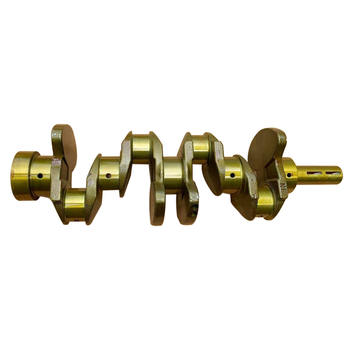The Intricate Dance of Engine Timing
Have you ever wondered how an engine's power, efficiency, and responsiveness are determined? Enter the world of crankshaft to camshaft timing, a delicate dance between two vital engine components that dictates when valves open and close.
The Heart of the Engine: Crankshaft and Camshaft
To understand the relationship between the crankshaft and camshaft, let's dive into their roles. The crankshaft transforms linear piston motion into rotational force, propelling your vehicle forward. The camshaft, on the other hand, controls the intake and exhaust valves' opening and closing, allowing air and fuel to enter and exit the combustion chamber.
Timing is Everything: Engine Performance Factors
Engine timing significantly impacts an engine's performance in several ways. Let's explore the key factors influenced by crankshaft to camshaft timing:
Adjusting the Timing Dance: Camshaft Timing Variables
Now that we understand engine timing's importance, let's explore the variables that impact camshaft timing:
- Duration: The length of time valves remain open affects engine performance, with longer durations increasing power at high RPMs.
- Lift: The distance valves travel from their closed position influences airflow and impacts engine performance.
- Overlap: The period when both intake and exhaust valves are open simultaneously impacts engine breathing and performance.
Practical Applications: Tips for Optimizing Engine Timing
Here are a few actionable tips to help you optimize your engine's crankshaft to camshaft timing:
- Consult your vehicle's manufacturer guidelines to determine the ideal timing settings for your engine.
- Consider upgrading to performance camshafts if you're seeking increased power and responsiveness.
- Regularly inspect and maintain engine components related to timing, such as timing belts or chains, to ensure optimal performance.
Beyond Timing: Additional Engine Performance Considerations
While crankshaft to camshaft timing plays a crucial role in engine performance, other factors to consider include:
- Compression ratio: The ratio of air and fuel mixture compressed in the combustion chamber affects engine power and efficiency.
- Ignition timing: The timing of the spark plug's spark impacts engine performance by ensuring proper combustion.
Conclusion: The Symphony of Engine Performance
In my experience, crankshaft to camshaft timing is the foundation of engine performance. By understanding this relationship and applying practical tips, you can unlock your engine's full potential. So, next time you're behind the wheel, listen to the symphony of your engine and appreciate the intricate dance that propels you forward.
If you enjoyed this article and found it helpful, please share it with fellow car enthusiasts and explore more content on engine performance optimization.




